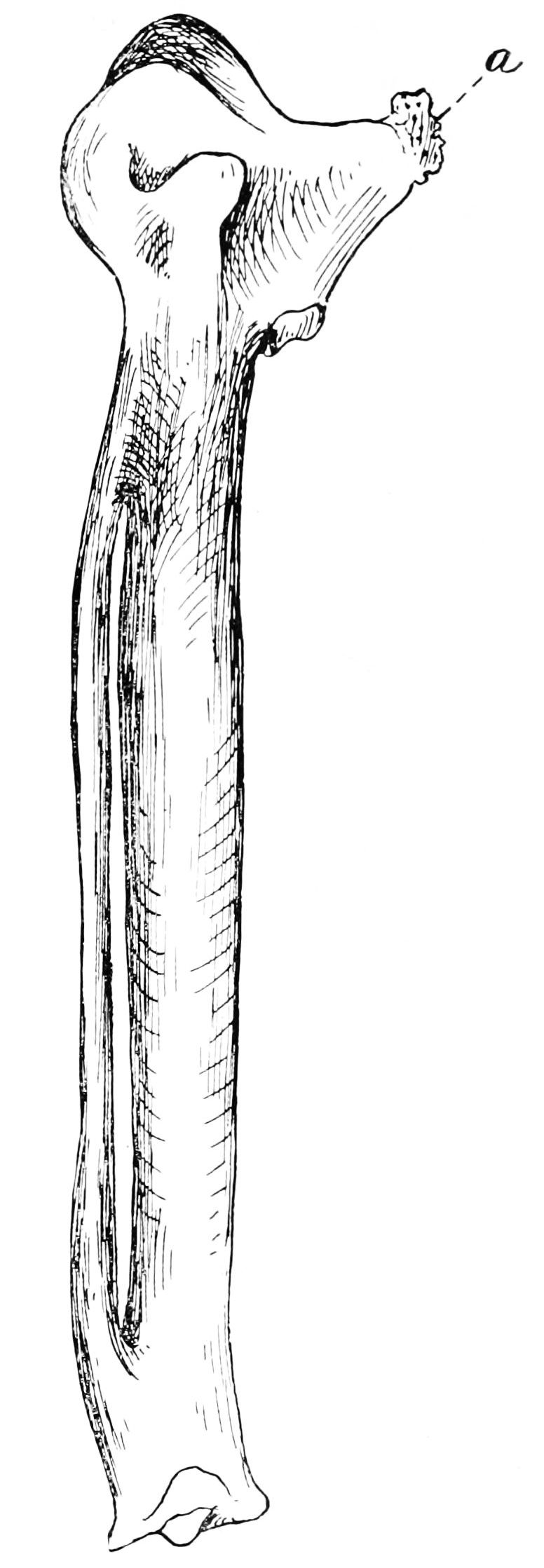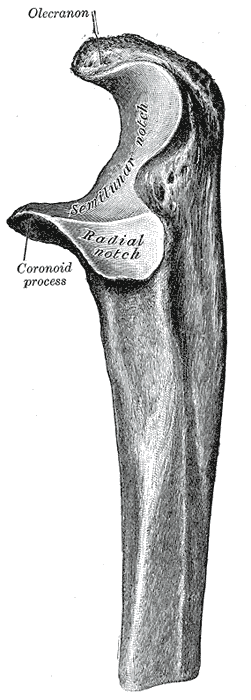|
Caerulonettion
''Caerulonettion'' (meaning "teal Eurasian teal, teal") is an extinct genus of anatid birds from the Miocene Epoch of Europe. The genus contains a single species, ''C. natator'', known from various limb and girdle bones. The ''Caerulonettion'' fossil material was originally assigned to various other anatid genera before being recognized as a distinct genus. Discovery and naming Fossil material assigned to ''Caerulonettion'' has been found in Early Miocene rocks of France and the Czech Republic, as well as early Middle Miocene rocks of Southern Germany. The lectotype specimen, National Museum of Natural History, France, MNHN Av-6428, consists of a left ulna found in the Saint-Gérand-le-Puy fossil locality of France. Additional bones known from nearby localities include right coracoids, humeri, ulnae, carpometacarpi, femora, and tibiotarsi. Partial left coracoids from the :de:Sandelzhausen, Sandelshausen locality of Germany and the Dolniche locality of Czech Republic have also b ... [...More Info...] [...Related Items...] OR: [Wikipedia] [Google] [Baidu] |
2023 In Archosaur Paleontology
This article records new taxa of every kind of fossil archosaur that were scheduled to be Binomial nomenclature, described during 2023, as well as other significant discoveries and events related to the paleontology of archosaurs that were published in 2023. Pseudosuchians New pseudosuchian taxa General pseudosuchian research * Evidence of the impact of the interplay of abiotic and biotic processes on the evolution of pseudosuchians is presented by Payne ''et al.'' (2023). * A study on the biomechanical properties of the skull of ''Riojasuchus, Riojasuchus tenuisceps'' is published by Taborda, Von Baczko & Desojo (2023), who propose that ''R. tenuisceps'' could have had a wading habit, feeding on small-sizey prey caught from the shoreline. * A study on the bone histology of ''Decuriasuchus, Decuriasuchus quartacolonia'' is published by Farias ''et al.'' (2023), who interpret their findings as indicative of early ontogenetic stage of known specimens, which might have stay ... [...More Info...] [...Related Items...] OR: [Wikipedia] [Google] [Baidu] |
Anatid
The Anatidae are the biological family of water birds that includes ducks, geese, and swans. The family has a cosmopolitan distribution, occurring on all the world's continents except Antarctica. These birds are adapted for swimming, floating on the water surface, and, in some cases, diving in at least shallow water. The family contains around 174 species in 43 genera (the magpie goose is no longer considered to be part of the Anatidae and is now placed in its own family, Anseranatidae). They are generally herbivorous and are monogamous breeders. A number of species undertake annual migrations. A few species have been domesticated for agriculture, and many others are hunted for food and recreation. Five species have become extinct since 1600, and many more are threatened with extinction. Description and ecology The ducks, geese, and swans are small- to large-sized birds with a broad and elongated general body plan. Diving species vary from this in being rounder. Extant species ... [...More Info...] [...Related Items...] OR: [Wikipedia] [Google] [Baidu] |
Early Miocene
The Early Miocene (also known as Lower Miocene) is a sub-epoch of the Miocene epoch (geology), Epoch made up of two faunal stage, stages: the Aquitanian age, Aquitanian and Burdigalian stages. The sub-epoch lasted from 23.03 ± 0.05 annum, Ma to 15.97 ± 0.05 Ma (million years ago). It was preceded by the Oligocene epoch. As the climate started to get cooler, the landscape started to change. New mammals evolved to replace the extinct animals of the Oligocene epoch. The first members of the hyena and weasel family started to evolve to replace the extinct ''Hyaenodon'', entelodonts and bear-dogs. The chalicotheres survived the Oligocene epoch. A new genus of entelodont called ''Daeodon'' evolved in order to adapt to the new habitats and hunt the new prey animals of the Early Miocene epoch; it quickly became the top predator of North America. But it became extinct due to competition from ''Amphicyon'', a newcomer from Eurasia. ''Amphicyon'' bested ''Daeodon'' because the bear-dog's la ... [...More Info...] [...Related Items...] OR: [Wikipedia] [Google] [Baidu] |
National Museum Of Natural History, France
The French National Museum of Natural History ( ; abbr. MNHN) is the national natural history museum of France and a of higher education part of Sorbonne University. The main museum, with four galleries, is located in Paris, France, within the Jardin des Plantes on the left bank of the River Seine. It was formally founded in 1793, during the French Revolution, but was begun even earlier in 1635 as the royal garden of medicinal plants. The museum now has 14 sites throughout France. Since the 2014 reform, it has been headed by a chairman, assisted by deputy managing directors. The Museum has a staff of approximately 2,350 members, including six hundred researchers. It is a member of the national network of naturalist collections (RECOLNAT). History 17th–18th century File:Jardin du roi 1636.png, The Royal Garden of Medicinal Plants in 1636 File:Buffon statue dsc00979.jpg, Statue of Georges-Louis Leclerc, Comte de Buffon in the formal garden File:Buffon, Georges Louis - Lecle ... [...More Info...] [...Related Items...] OR: [Wikipedia] [Google] [Baidu] |
Genus
Genus (; : genera ) is a taxonomic rank above species and below family (taxonomy), family as used in the biological classification of extant taxon, living and fossil organisms as well as Virus classification#ICTV classification, viruses. In binomial nomenclature, the genus name forms the first part of the binomial species name for each species within the genus. :E.g. ''Panthera leo'' (lion) and ''Panthera onca'' (jaguar) are two species within the genus ''Panthera''. ''Panthera'' is a genus within the family Felidae. The composition of a genus is determined by taxonomy (biology), taxonomists. The standards for genus classification are not strictly codified, so different authorities often produce different classifications for genera. There are some general practices used, however, including the idea that a newly defined genus should fulfill these three criteria to be descriptively useful: # monophyly – all descendants of an ancestral taxon are grouped together (i.e. Phylogeneti ... [...More Info...] [...Related Items...] OR: [Wikipedia] [Google] [Baidu] |
Species Description
A species description is a formal scientific description of a newly encountered species, typically articulated through a scientific publication. Its purpose is to provide a clear description of a new species of organism and explain how it differs from species that have been previously described or related species. For a species to be considered valid, a species description must follow established guidelines and naming conventions dictated by relevant nomenclature codes. These include the International Code of Zoological Nomenclature (ICZN) for animals, the International Code of Nomenclature for algae, fungi, and plants (ICN) for plants, and the International Committee on Taxonomy of Viruses (ICTV) for viruses. A species description often includes photographs or other illustrations of type material and information regarding where this material is deposited. The publication in which the species is described gives the new species a formal scientific name. Some 1.9 million ... [...More Info...] [...Related Items...] OR: [Wikipedia] [Google] [Baidu] |
Tibiotarsi
The tibiotarsus is the large bone between the femur and the tarsometatarsus in the leg of a bird. It is the fusion of the proximal part of the tarsus with the tibia. A similar structure also occurred in the Mesozoic Heterodontosauridae. These small ornithischian dinosaurs were unrelated to birds and the similarity of their foot bones is best explained by convergent evolution. See also *Bird anatomy References * Proctor, Nobel S. ''Manual of Ornithology: Avian Structure and Function''. Yale University Press Yale University Press is the university press of Yale University. It was founded in 1908 by George Parmly Day and Clarence Day, grandsons of Benjamin Day, and became a department of Yale University in 1961, but it remains financially and ope .... (1993) Bird anatomy Dinosaur anatomy {{ornithology-stub ... [...More Info...] [...Related Items...] OR: [Wikipedia] [Google] [Baidu] |
Femora
The femur (; : femurs or femora ), or thigh bone is the only bone in the thigh — the region of the lower limb between the hip and the knee. In many four-legged animals the femur is the upper bone of the hindleg. The top of the femur fits into a socket in the pelvis called the hip joint, and the bottom of the femur connects to the shinbone (tibia) and kneecap (patella) to form the knee. In humans the femur is the largest and thickest bone in the body. Structure The femur is the only bone in the upper leg. The two femurs converge medially toward the knees, where they articulate with the proximal ends of the tibiae. The angle at which the femora converge is an important factor in determining the femoral-tibial angle. In females, thicker pelvic bones cause the femora to converge more than in males. In the condition ''genu valgum'' (knock knee), the femurs converge so much that the knees touch. The opposite condition, ''genu varum'' (bow-leggedness), occurs when the femurs ... [...More Info...] [...Related Items...] OR: [Wikipedia] [Google] [Baidu] |
Carpometacarpi
The carpometacarpus is a bone found in the hands of birds. It results from the fusion of the carpal and metacarpal bone, and is essentially a single fused bone between the wrist and the knuckles. It is a smallish bone in most birds, generally flattened and with a large hole in the middle. In flightless birds, however, its shape may be slightly different, or it might be absent entirely. It forms the tip of the wing skeleton in birds. To it, most of the primary remiges attach. The alula, by contrast, is formed by the thumb, which does not completely fuse with the other hand-bones. Likewise, the tipmost primaries attach to the phalanx bones. To non-biologists the carpometacarpus may be best known from buffalo wings. Buffalo wings come in two basic sizes, a large angled one containing three major bones, and a smaller flat one containing only two. The bone missing in the latter is the carpometacarpus. See also * Carpometacarpal joint The carpometacarpal (CMC) joints are five joi ... [...More Info...] [...Related Items...] OR: [Wikipedia] [Google] [Baidu] |
Ulnae
The ulna or ulnar bone (: ulnae or ulnas) is a long bone in the forearm stretching from the elbow to the wrist. It is on the same side of the forearm as the little finger, running parallel to the radius, the forearm's other long bone. Longer and thinner than the radius, the ulna is considered to be the smaller long bone of the lower arm. The corresponding bone in the lower leg is the fibula. Structure The ulna is a long bone found in the forearm that stretches from the elbow to the wrist, and when in standard anatomical position, is found on the medial side of the forearm. It is broader close to the elbow, and narrows as it approaches the wrist. Close to the elbow, the ulna has a bony process, the olecranon process, a hook-like structure that fits into the olecranon fossa of the humerus. This prevents hyperextension and forms a hinge joint with the trochlea of the humerus. There is also a radial notch for the head of the radius, and the ulnar tuberosity to which muscles at ... [...More Info...] [...Related Items...] OR: [Wikipedia] [Google] [Baidu] |






